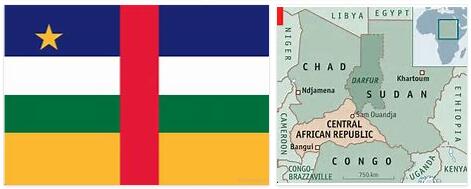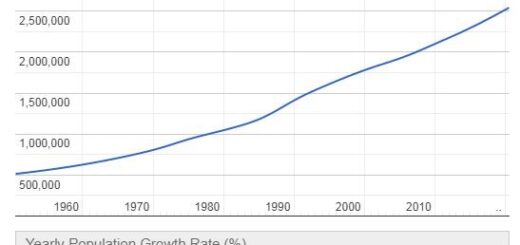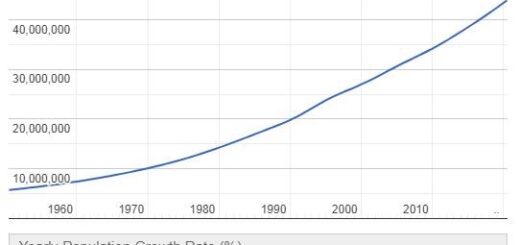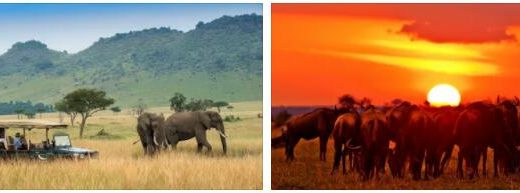Central African Republic State Overview
History
Before the French colonization, the current territory of the Central African Republic was nourished by many people who escaped from the slave trade. In the 1880s the French annexed the area and in 1894 the territory was organized under the name of Ubangui-Chari, which in 1905 became a colony and in 1910 it became part of French Equatorial Africa along with the Congo and Chad.
The region suffered one of the wildest and most predatory forms of colonization imposed by the European powers in Africa. The French military occupation was a bridgehead for the activities of some 40 companies in charge of commercializing the rubber and ivory of the entire area, to which cotton, coffee and diamonds were later added. These companies carried out an exploitation in which slave labor, massacres and persecutions were widely used resources.
After World War II, financial difficulties in maintaining a colonial administration forced France to grant partial autonomy. The country achieved autonomy in 1958 and full independence in 1960 under the name of the Central African Republic, although still effectively controlled by France.
Independent republic
The first president of the independent Republic, David Dacko, was overthrown in 1965 by a coup d’état for which his nephew, Colonel Jean-Bédel Bokassa, was responsible. In 1972, Bokassa proclaimed himself President for Life, then Field Marshal and finally decided to crown himself emperor of the country, which he himself changed its name to the Central African Empire. The coronation ceremony, in December 1977, cost $ 28 million and was funded by France, Israel and South Africa.
The dissatisfaction of the population reached a critical point. Several rebellions of workers and students broke out, which were cruelly suppressed. The scandal shook world public opinion. France then decided to overthrow the emperor and erase the bad image created when he helped his enthronement, thinking of using him as a piece in the neocolonial game. While Bokassa was in Libya, on September 20, 1979, he dispatched a military plane to take back to Bangui to former President David Dacko, who assumed power without hiding his character as a colonial envoy, protected by a thousand French soldiers. Dacko reinstated the republic, while granting France the rights to use the huge Bouar air base for ten years.
Dacko’s return was just a name change: corruption and repression continued as in Bokassa’s time. Amid conspiracies and struggles for power, a military coup toppled Dacko in September 1981, with General Kolingba at the helm.
In the following years, political stability was mainly guaranteed by the French army, which continued to maintain a strong presence. Years later, as democracy took hold across Francophone Africa, violent domestic protests and French pressure forced the introduction of a multi-party system. However, the shadow of the old colonial metropolis remained omnipresent in the country:
The 15 of March of 2003 comes to power by General Francois Bozize by a coup which involved French troops. Bozize was overthrown by an armed insurrection in March 2013, and a heterogeneous coalition of guerrilla groups known as SELEKA came to power, accused of having committed serious human rights violations in the country during the war against Bozize, after this fact took power as de facto president and leader of the coalition Michel Djotodia [1] , who resigned from this position on January 10, 2014 under pressure from the regional Economic Community of Central African States due to the political instability that the country is experiencing [2] .
Political-administrative organization
The country is divided into fourteen administrative prefectures, two economic prefectures, and an autonomous commune.
The Central African Republic is divided into fourteen prefectures:
The prefectures are in turn divided into 71 sub-prefectures.
Administrative prefectures
- Bamingui-Bangoran (Ndélé)
- Basse-Kotto (Mobaye)
- Haute-Kotto (Bria)
- Haut-Mbomou (Obo)
- Kémo (Sibut)
- Lobaye (Mbaïki)
- Mambéré-Kadéï (Berbérati)
- Mbomou (Bangassou)
- Nana-Mambéré (Bouar)
- Ombella-M’Poko (Bimbo)
- Ouaka (Bambari)
- Ouham (Bossangoa)
- Ouham-Pendé (Bozoum)
- Vakaga (Bi)
Economic prefectures
- Nana-Grébizi (Kaga Bandoro)
- Sangha-Mbaéré (Nola)
Autonomous commune
- Bangui, the national capital.
Political parties
Movement for the Liberation of the Central African People ; Central African Democratic Union ; Movement for Democracy and Development; Patriotic Front for Progress, social-democratic; Social Democratic Party; Alliance for Democracy and Progress.
Geography
Location
According to andyeducation, Central African Republic is located in the north of the Congo River basin, bordered to the north by Chad and Sudan, to the south by the Democratic Republic of the Congo and the Republic of the Congo, to the east by Sudan, and to the west by Cameroon.
Relief
The Central African Republic is a wide plain divided in two by a modest ridge that crosses the country from North to South. The monotony of the landscape is only interrupted by some minor mountain formations, the largest of which is the Yadé massif (1,420 m) in the western section, and the Bongos mountains (1,400 m) in the eastern half.
Hydrography
Two river systems run through the country: To the east of the ridge, the rivers flow from North to South and contribute their waters to the Ubangui River, a tributary of the Congo River. In the western sector, the Chari River system flows from South to North until it finally contributes its waters to Lake Chad.
Climate
The climate is tropical, humid and with high temperatures. There are two very different seasons: the dry season from December to May, and the rainy season from June to November. The arrival of the wet season occurs abruptly and is generally accompanied by tornadoes and heavy flooding. The highest rainfall occurs in the Ubangui river valley, in the south of the country.
Flora and fauna
Most of the surface is covered by savanna vegetation, composed of grasslands and isolated trees. In the southwest of the country, there is a region covered by dense jungle.
The savannah is divided from north to south between the acacia savanna of the Sahel, the eastern Sudanese savanna and the mosaic of jungle and savanna from the north of the Congo.
The forests correspond to three different ecoregions: the northwestern Congo lowland forest in the extreme southwest, the northeastern Congo lowland forest in the south, and the western Congo swamp forest in a small enclave on the common border with the Republic. of the Congo and the Democratic Republic of the Congo.
Regarding the fauna, in the Manovo-Gounda St. Floris National Park, located in the north of the country, in the Bamingui-Bangoran prefecture, there are endangered species such as black rhinoceros, cheetahs, elephants, leopards, buffaloes, etc.
Economy
Located in the heart of Africa, without access to the sea, the country occupies a plateau watered by the tributaries of the Congo River (through one of them, the Oubangui, it channels its foreign trade) and Lake Chad (Chad). The southwestern portion is occupied by a dense tropical forest. Commercial agriculture focuses on three products: cotton, coffee, and tobacco. Diamond mining is an important source of resources. Inappropriate methods of land use have increased erosion and loss of soil fertility. Water scarcity and pollution of some major rivers are serious problems.
Demography
- Population: 4,150,553
- I grew. annual: 2.3%
- urban: 44.9%
- I grew. urban: 2.8%
Most Central Africans belong to the berry ethnic group (23.7%), followed by banda (23.4%), mandjia (14.7%), sara (6.5%), mbum (6.3%)), m’baka (4.3%) and kare (2.4%).
Health
- Life expectancy: 40 years
- Men: 39 years
- Women: 40 years
- Children per woman: 4.6
- Maternal mortality: 1,100 per 100,000 live births
- inftil: 115 per 1,000
- <5 years: 193 per 1,000
- Calories per day: 1,932 per cap.
- 4 doctors per 100,000 residents
- Drinking water: 75%
Education
- Literacy: 49%
- Men: 65%
- Women: 32%
- Schooling: University: 2%
Culture
Idiaoma
French (official); Sango is the national language, which enables inter-ethnic communication.
Religions
There is no official religion. There are 24% who practice traditional African cults, 25% are Protestant, 25% Catholic and 15% Muslim
Sports
The country has a national soccer team



